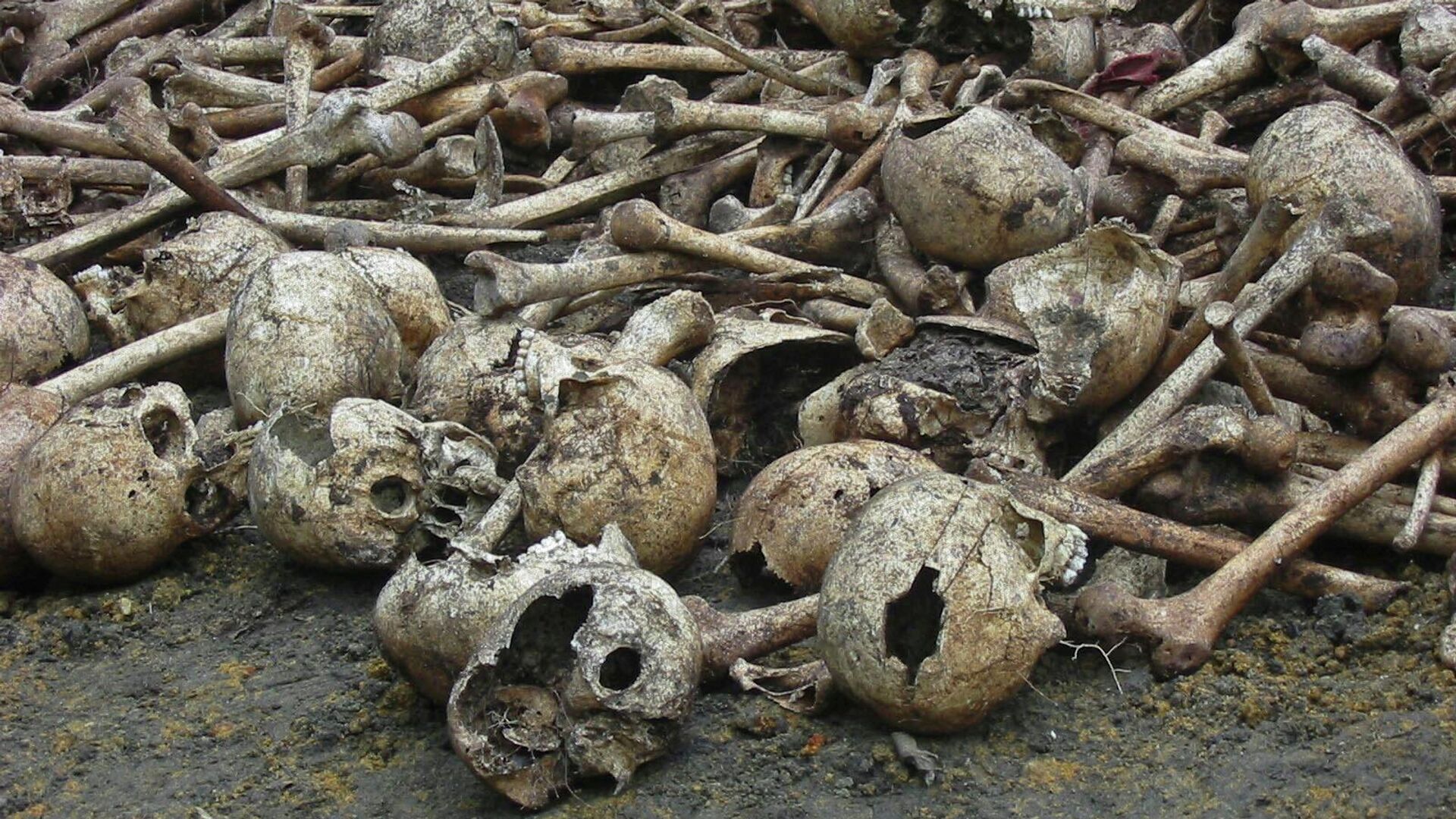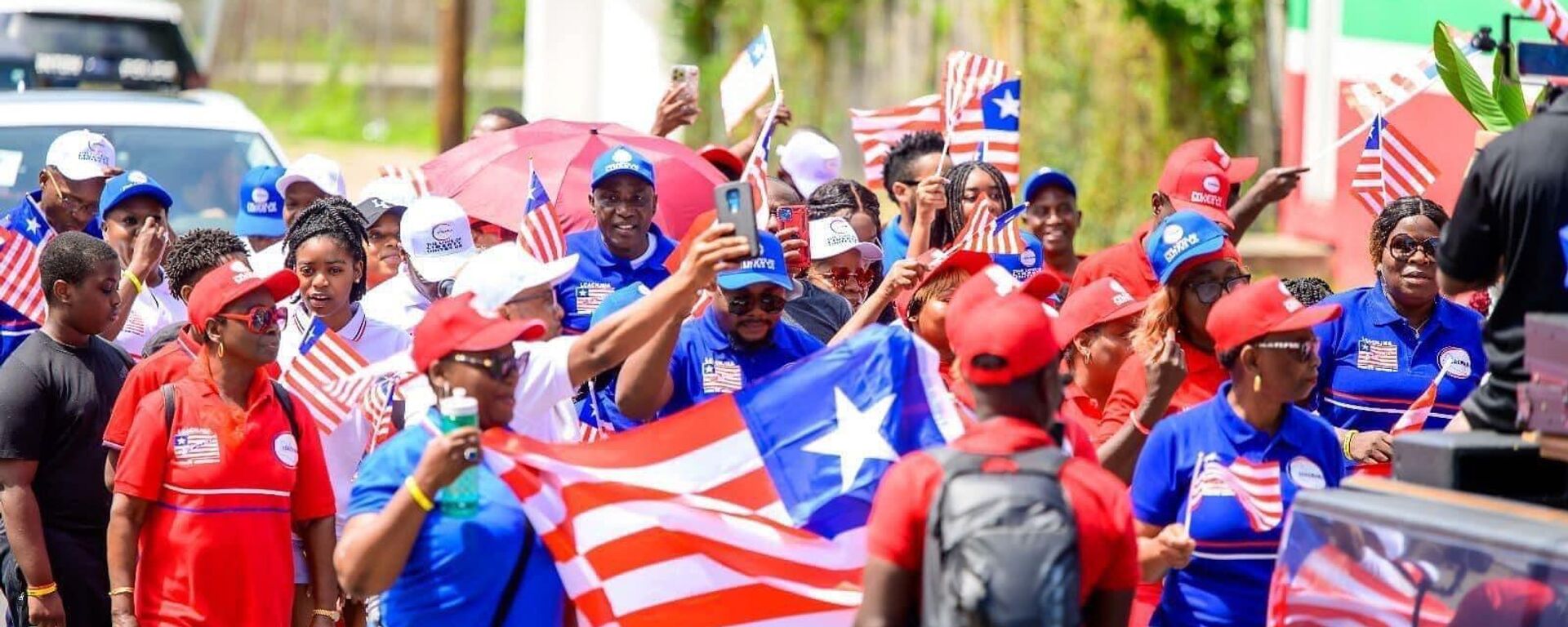https://en.sputniknews.africa/20230818/20-years-of-accra-peace-roots-of-second-liberian-civil-war-1061423822.html
Accra Peace 20 Years Later: Roots of Second Liberian Civil War
Accra Peace 20 Years Later: Roots of Second Liberian Civil War
Sputnik Africa
Friday marks the 20th anniversary of the Comprehensive Peace Agreement concluded in the Ghanaian capital Accra that ended Liberia's violent second civil war... 18.08.2023, Sputnik Africa
2023-08-18T14:21+0200
2023-08-18T14:21+0200
2023-08-18T17:07+0200
features
africa in details
liberia
west africa
guinea
conflict
sierra leone
economic community of west african states (ecowas)
nigeria
https://cdn1.img.sputniknews.africa/img/07e7/08/12/1061427565_0:151:1600:1051_1920x0_80_0_0_4d98475f1f76e2df9a433d5640375849.jpg
In 1996, Liberia saw the end of the first civil war, which had lasted seven years and was resolved with the intervention of the UN and the Economic Community of West African States (ECOWAS).The internal conflict was triggered by the unpopular policies of President Samuel Doe, who, after being elected in 1985 in what international observers considered a rigged election, established an ethnic dictatorship of the Krahn people in the country.However, the fighting, which also involved ECOWAS forces that sought to impose a ceasefire on the parties, continued until 1997, when a peace agreement was reached that provided for general elections in the country.Charles Taylor won the presidential election with 75.33% of the vote, and ECOWAS forces were withdrawn shortly thereafter.However, after the election, the return to peace did not last long. In early 1999, the armed opposition, supported by Guinea and Sierra Leone, began to prepare for military action against the Taylor regime.The Guinea and Sierra Leone interventions were motivated by Taylor's desire to make Liberia a regional power, for which purpose he actively supported rebel groups in these West African countries, Liberian politician Amos Sawyer argued.In addition, ethnic divisions, abuse of power by elites, a corrupt political system, and economic inequality fueled the fiery situation, according to PeacebuildingData, a service that specializes in demographic research in war-affected countries, which conducted social surveys among victims of violence in the country.Consequently, in 1999, armed Liberian rebel groups that formed the Liberians United for Reconciliation and Democracy (LURD) began to encroach on the country from neighboring Guinea.Due to international sanctions imposed on the Liberian government for supporting rebels in neighboring countries and backed by Guinea and Sierra Leone, Liberian insurgents started to push back government forces. In mid-February 2002, LURD units approached the capital city of Monrovia at a distance of 44 kilometers.In early 2003, the armed group Movement for Democracy in Liberia (MODEL) invaded the southern part of the country from the Ivory Coast. This resulted in the Liberian government controlling only a third part of the country, with the LURD besieging the capital.Finally, on August 18, 2003, the Accra Comprehensive Peace Agreement was signed in Ghana between the Liberian government and rebel groups, formally ending the conflict. The peace treaty embraced a wide range of intended reforms: a commitment to investigate human rights through a truth commission, and to vet the security forces for human rights.In September of that year, the UN opted to deploy a peacekeeping mission to the country to consolidate the outcomes of the peace agreement. Nigeria also deployed peacekeepers as part of the ECOWAS interim force. The UN mission ended its mandate in 2018.According to the UN, Liberia's civil wars left more than 250,000 people dead and about a third of the population homeless.Despite 20 years of peace, Liberia has yet to recover economically to the pre-war period, with the country's per capita income remaining about a third of the level it was prior to the civil wars, according to the IMF.
https://en.sputniknews.africa/20230812/what-african-countries-have-been-subject-to-ecowas-military-interventions-1061262911.html
https://en.sputniknews.africa/20230726/land-of-the-free-liberia-celebrates-independence-day-1060788671.html
https://en.sputniknews.africa/20230806/history-of-ecowas-military-interventions-in-light-of-expiring-ultimatum-to-niger-1061107707.html
liberia
west africa
guinea
sierra leone
nigeria
Sputnik Africa
feedback@sputniknews.com
+74956456601
MIA „Rossiya Segodnya“
2023
Maxim Grishenkin
https://cdn1.img.sputniknews.africa/img/07e7/0a/17/1063018107_0:0:1104:1103_100x100_80_0_0_03090c85a11f5d2e8a19cf1d989443c9.jpg
Maxim Grishenkin
https://cdn1.img.sputniknews.africa/img/07e7/0a/17/1063018107_0:0:1104:1103_100x100_80_0_0_03090c85a11f5d2e8a19cf1d989443c9.jpg
News
en_EN
Sputnik Africa
feedback@sputniknews.com
+74956456601
MIA „Rossiya Segodnya“
Sputnik Africa
feedback@sputniknews.com
+74956456601
MIA „Rossiya Segodnya“
Maxim Grishenkin
https://cdn1.img.sputniknews.africa/img/07e7/0a/17/1063018107_0:0:1104:1103_100x100_80_0_0_03090c85a11f5d2e8a19cf1d989443c9.jpg
africa in details, liberia, west africa, guinea, conflict, sierra leone, economic community of west african states (ecowas), nigeria
africa in details, liberia, west africa, guinea, conflict, sierra leone, economic community of west african states (ecowas), nigeria
Accra Peace 20 Years Later: Roots of Second Liberian Civil War
14:21 18.08.2023 (Updated: 17:07 18.08.2023) Longread
Friday marks the 20th anniversary of the Comprehensive Peace Agreement concluded in the Ghanaian capital Accra that ended Liberia's violent second civil war. In honor of the occasion, Sputnik Africa reviews the background and course of the bloody events, echoes of which are still visible in the country today.
In 1996, Liberia saw the end of the first civil war, which had lasted seven years and was resolved with the intervention of the UN and the Economic Community of West African States (ECOWAS).
The internal conflict was triggered by the unpopular policies of President Samuel Doe, who, after being elected in 1985 in what international observers considered a rigged election, established an ethnic dictatorship of the Krahn people in the country.
Doe's adversary in the civil war was the National Patriotic Front of Liberia (NPFL), led by Charles Taylor, which invaded Liberia from the Ivory Coast to overthrow Doe in December 1989 and took control of most of the country within a year.
However, the fighting, which also involved ECOWAS forces that sought to impose a ceasefire on the parties, continued until 1997, when a peace agreement was reached that provided for general elections in the country.
Charles Taylor won the presidential election with 75.33% of the vote, and ECOWAS forces were withdrawn shortly thereafter.
However, after the election, the return to peace did not last long. In early 1999, the armed opposition, supported by
Guinea and Sierra Leone, began to prepare for military action against the Taylor regime.
Despite hopes for security, the Taylor government made little effort to reconcile or protect human rights. Violations against human rights, as noted by experts, included torture and rape of suspected opposition supporters, extrajudicial killings, use of child soldiers, and persecution of government critics.
The Guinea and Sierra Leone interventions were motivated by Taylor's desire to make Liberia a regional power, for which purpose he actively supported rebel groups in these West African countries, Liberian politician Amos Sawyer argued.
In addition, ethnic divisions, abuse of power by elites, a
corrupt political system, and economic inequality fueled the fiery situation, according to PeacebuildingData, a service that specializes in demographic research in war-affected countries, which conducted social surveys among victims of violence in the country.
Consequently, in 1999, armed Liberian rebel groups that formed the Liberians United for Reconciliation and Democracy (LURD) began to encroach on the country from neighboring Guinea.
Due to international sanctions imposed on the Liberian government for supporting rebels in neighboring countries and backed by Guinea and Sierra Leone, Liberian insurgents started to push back government forces. In mid-February 2002, LURD units approached the capital city of Monrovia at a distance of 44 kilometers.
In early 2003, the armed group Movement for Democracy in Liberia (MODEL)
invaded the southern part of the country from the Ivory Coast. This resulted in the Liberian government controlling only a third part of the country, with the LURD besieging the capital.
In these circumstances, Taylor resigned in early August and fled to Nigeria, where he was granted political asylum, leaving Vice President Moses Blah to negotiate on behalf of the government.
Finally, on August 18, 2003, the Accra Comprehensive Peace Agreement was signed in Ghana between the Liberian government and rebel groups, formally ending the conflict. The peace treaty embraced a wide range of intended reforms: a commitment to investigate human rights through a truth commission, and to vet the security forces for human rights.
In September of that year, the UN opted to deploy a peacekeeping mission to the country to consolidate the outcomes of the peace agreement.
Nigeria also deployed peacekeepers as part of the ECOWAS interim force. The UN mission ended its mandate in 2018.
According to the
UN, Liberia's civil wars left more than 250,000 people dead and about a third of the population homeless.
Despite 20 years of peace, Liberia has yet to recover economically to the pre-war period, with the country's per capita income remaining about a third of the level it was prior to the civil wars, according to the IMF.





